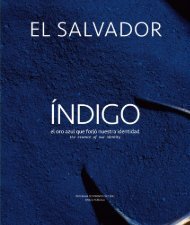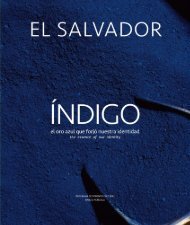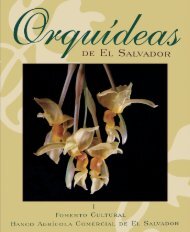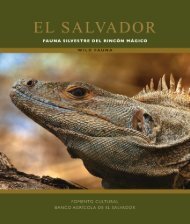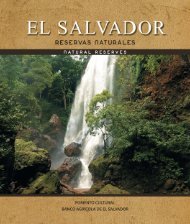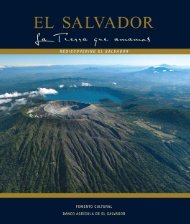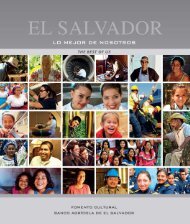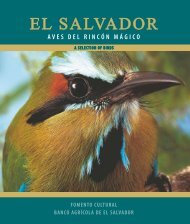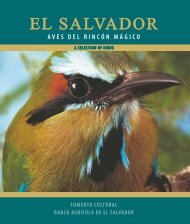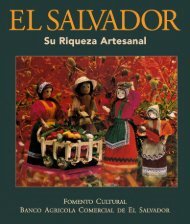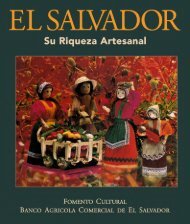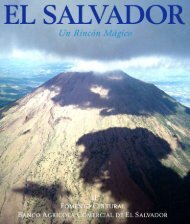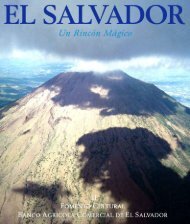You also want an ePaper? Increase the reach of your titles
YUMPU automatically turns print PDFs into web optimized ePapers that Google loves.
Identity Symbols<br />
From the agrarian history of this country, symbols that have been recognized by<br />
Salvadoreans through time and that identify us as a nation emerge. In this chapter<br />
we present species that have given us identity: the historic crops, which have marked<br />
progress; the natural symbols chosen by the Government to represent the homeland;<br />
and the species that each Salvadorean identifies as their own and when we are outside<br />
the country they evoke our roots and sense of belonging.<br />
Our historical crops have had two functions in time: as sacred species in the<br />
cosmovision of first civilizations Nahuas and Mayas, as raw material for commercial<br />
interchange during the con<strong>que</strong>st and Spanish Colony. Cacao, añil, and corn meant<br />
newness for Ancient World. New economic oportunities were trazed throughout<br />
the fruits of the New World. Each flavor had a cultural value and an economic<br />
global impact.<br />
Through the 19th century, coffee gave a historical transformation for the nation; its<br />
importance is still valuable in our times. Despite the changes in time, natural symbols<br />
renew its meanings for each generation. Central America was an agrarian region,<br />
whose crops gave prosperity through centuries. To institutionalize this identity<br />
meant to also economically nationalize natural species. Coffee and sugarcane are<br />
important crops to form our identity, but due to the economic transcendence that<br />
they have, we will include them in the chapter "Furrows for Development", since<br />
their crop covers a vast extension of our territory and provides a source of income<br />
to thousands of families.<br />
Salvadoreans identify themselves from a natural perspective, whose landscape<br />
and species they have turned into icons. The Government has chosen some of<br />
them to nominate our national symbols; the "Izote" as the national flower, the<br />
"Maquilishuat" and the balm as our national trees, the exhuberance of the<br />
volcanoes surrounded by a crown with laurel leaves for our national shield; and the<br />
"Ceiba", an ancient sacred tree as our national symbol for peace.<br />
The biologist Leiman Ricardo <strong>La</strong>ra Guerra has sought to make a cultural reading<br />
of the national botany. In his book "Plantas emblemáticas. El Salvador historia<br />
y agricultura", he ensures that native plants represent the Salvadorean culture<br />
and the time when they were introduced, "represents the foundation for political,<br />
economic and cultural aspirations of society".<br />
Cortés blanco,<br />
Handroanthus chrysanthus.<br />
100



